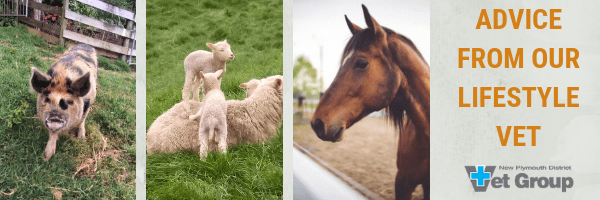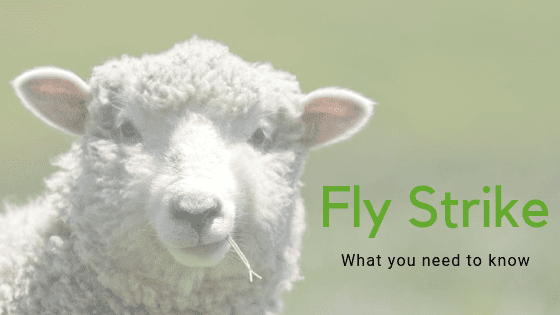Pre-Spring Checklist Lambing/calving kit prepared Pregnant ewes vaccinated against clostridial diseases Winter feeding plan in…

Advice from our Lifestyle Vet March 2019
Facial Eczema (FE)
Spore counts are rising as we speak, and as we know, it isn’t long before we start seeing clinical signs of FE in our grazing stock. Please read the information under the Lifestyle Block section of our website to better understand this syndrome.
The best way to protect your stock is to administer a long acting zinc bullet. This gives 6 weeks protection to sheep and 4 weeks to cattle. If you have not used these before it is best to book an appointment with a vet so we can do it for you and show you how for next time.
If unprotected, there is a high chance that your stock will develop liver disease. Some of these animals do not survive, others become ‘poorly’ and succumb to the next stressor (usually during spring). When the animal’s liver isn’t functioning properly, it doesn’t metabolise food properly. Unfortunately, this means they become very sensitive to light, and their skin becomes very fragile. You may see your stock seeking shade, with their ears drooping. White patches of skin often look burnt, and start to peel or flake off. They are often depressed and stop eating when they are very ill. If you would like to have an idea of the local spore counts, please check our website www.npvet.co.nz weekly for updated levels around our region. Alternatively, if you would like them emailed to you weekly, please email npvetsporecounts@gmail.com. You could also bring a grass sample from your own farm in to the clinic and we will perform a spore count for a cost of $20. Please use scissors to cut the grass approximately 1cm off the ground. Take grass from 6-8 places around the paddock (avoiding trough areas, hedges and gateways) until you have a couple of good handfuls. Put it in a paper bag and bring it to us the same day.
Summer Feeding
We have been particularly blessed with a good summer so far, so our pasture levels are looking healthy. However, you do never know what is around the corner, and with this latest ‘heatwave’ hitting the country we have to be prepared for any eventuality.
Pasture residual is what is left behind after grazing. Please take time to look at this and take note of how low you are grazing your paddocks.
The leaf is where photosynthesis occurs, which means more growth, so it is important to leave some behind after grazing.
At this time of year it is about saving and using what we have, efficiently. Hopefully it won’t be burnt off. Dry pasture is not nutritional, and can’t photosynthesise to make new pasture.
Young stock especially will need supplements if pasture isn’t growing. If pasture levels are really low, silage has the best feed value. Hay is a good maintenance option that stock will eat if they are hungry. Be prepared for a lot of wastage though!
If you have willow or poplar trees, these can be systematically pruned, and the prunings fed to stock. Be careful though, if you get into the habit of feeding prunings you may accidentally feed something that is toxic to stock (yew, tutu, macrocarpa and rhododendron are some of these).
Water
Err on the high side as you don’t want to run out of this precious commodity! Make considerations for animals that lack shade in summer, or are walking long distances. They will need more water

Haemonchus (Barber’s Pole Worm)
This internal parasite can affect many grazing ruminants in NZ, but we mainly see clinical signs in sheep, goats and camelids (alpacas and llamas). Haemonchus contortus is a blood sucking worm that lives in the stomach. They are very prolific, with one female laying up to 10,000 eggs a day! Clinical disease is seen when the weather is warm and moist, so late summer – early autumn is when it is obvious. Signs of disease relate to blood loss. We will often see lethargy, anorexia, weight loss and pale gums. Alpacas unfortunately hide a lot of their clinical signs, so the first you know of it is when they sit down and refuse to move! By this time they can be very ill indeed.
The source of the issue is heavily contaminated pasture. Therefore it is important to move stock on to areas where they haven’t been for some time, if this is possible. You can also cross graze the pasture with cattle. If one animal is affected, the whole mob will be at risk. Check animals for pale gums regularly, to get ahead of the disease.
You could bring in a fresh faecal sample to the vet clinic and for a small fee ($15) we can let you know the faecal egg count (FEC) of that particular animal and give you advice on what product to drench with, and when.
It is also important to ensure there are good feed levels at this time of year and avoid overstocking.
Treatment of severe
Anne Terrill BVSc


